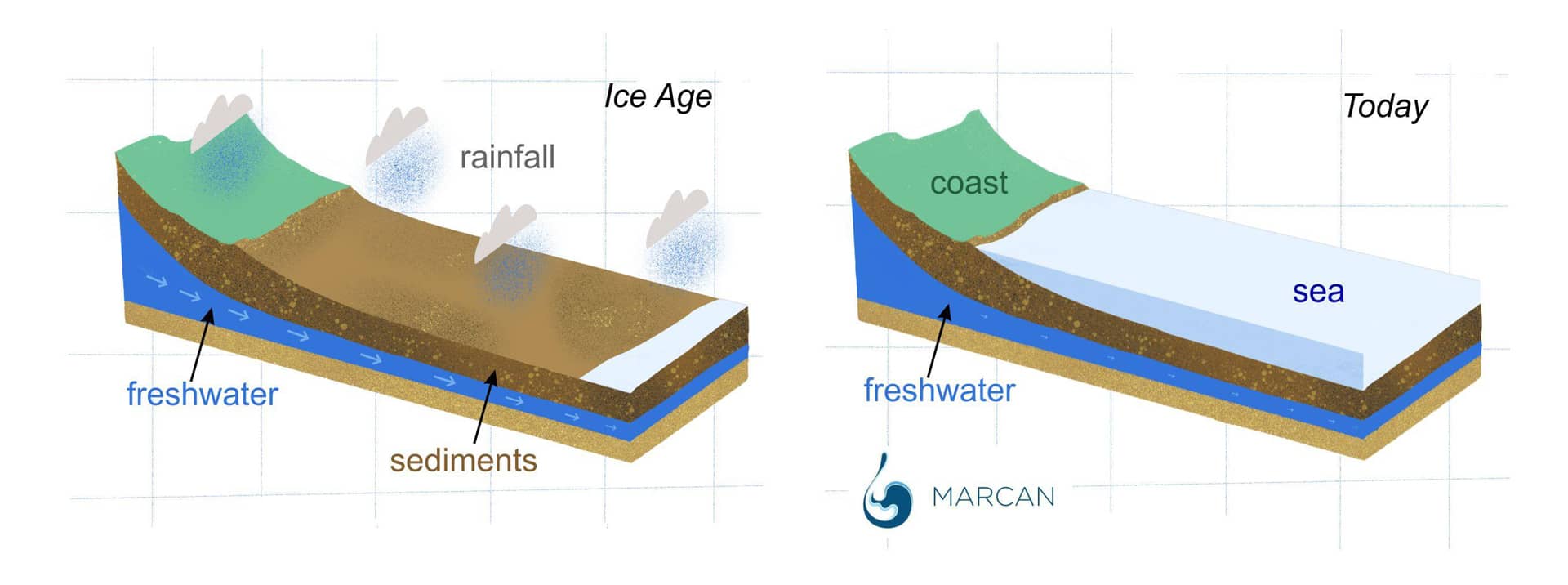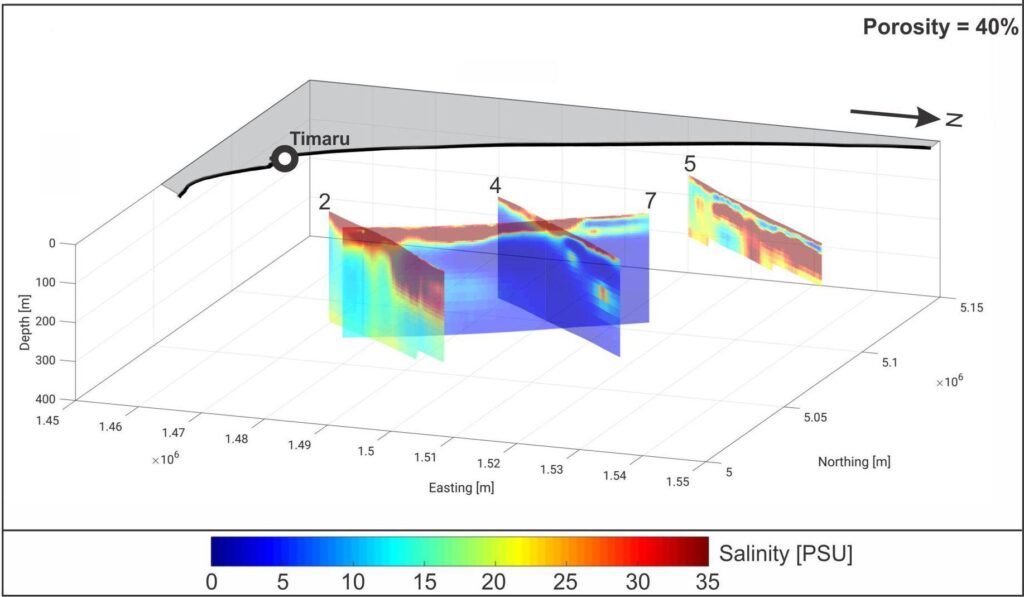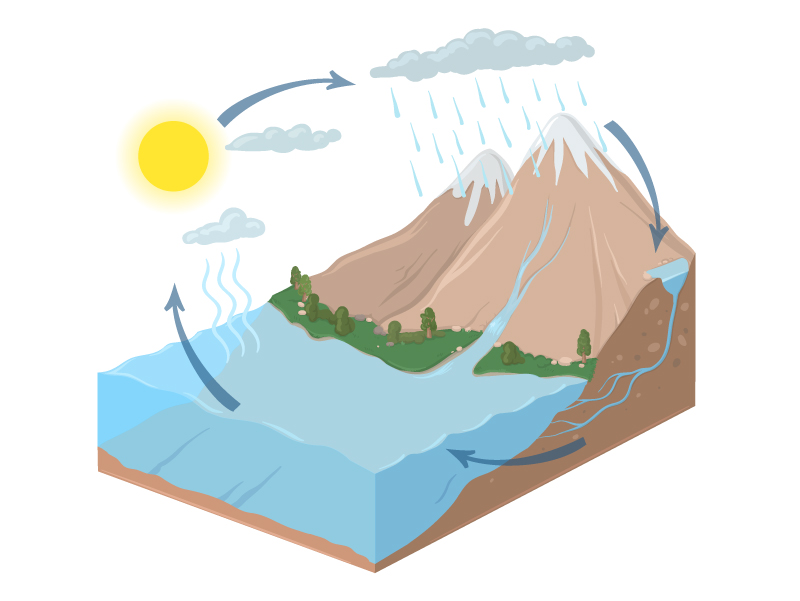What is offshore freshened groundwater (OFG)?
Offshore freshened groundwater (OFG) is the fresher-than-seawater pore fluids (i.e., salinity < 35 PSU) in seafloor sediments and rocks. The occurrences of OFG can be explained by active meteoric recharge, emplacement during Pleistocene sea-level lowstands, sub- and pro-glacial injection, as well as diagenetic processes such as clay dehydration and gas hydrate decomposition. OFG is a potential source of freshwater for some coastal areas where drinking water supply is scarce. Environmentally, the active flow of OFG could be an efficient way transporting land-derived contaminants and heavy metals to the offshore environment and results in unconstrained spread of pollution. From the biogeochemical point of view, OFG and the chemicals associated with it could be an important energy source for deep-seated microbes and thus sustains deep sea biodiversity.
(Source: MARCAN, www.marcan.eu)
Where do we find Offshore Freshened Groundwater?
First reported in the 1960s, offshore freshened groundwater (OFG) has now been documented in most continental margins around the world. The estimated global volume of OFG is in the order of 105-106 km3 (Adkins et al., 2002; Post et al., 2013; Micallef et al., 2020). OFG can be emplaced by meteoric recharge (either at present or during sea-level lowstands; Meisler et al., 1984; Michael et al., 2016), sub-glacial and pro-glacial injection (Person et al., 2007), diagenesis (Kastner et al., 1991) or gas hydrate dissociation (Hesse and Harrison, 1981). The large majority of OFG records are meteoric in origin and located in siliciclastic, passive, non-glaciated margins, within 55 km of the coast, down to a water depth of 100 m, and a sub-seafloor depth of 200 m (Micallef et al., 2020).
(Source: Micallef, A., Person, M., Berndt, C., Bertoni, C., Cohen, D., Dugan, B., et al. (2021). Offshore freshened groundwater in continental margins. Reviews of Geophysics, 59, e2020RG000706.)
How can we learn more about OFG and which tools do we need?
Most fundamental information on OFG systems is derived from chance discoveries in industrial and academic drilling campaigns. Answering first-order questions on OFG distribution, dimensions, flow characteristics, and emplacement mechanisms will require a three-pronged approach:
- geophysical, in particular seismic reflection and electromagnetic data, which permit mapping of sub-seafloor lithology, structures, and resistive sub-seafloor freshwater
- geochemical, via the application of stable isotopes and isotopic tracers to constrain the origin of the OFG and its residence time
- numerical groundwater models, to estimate OFG volumes and emplacement.
(Source: Micallef, A., Person, M., Haroon, A., Weymer, B. A., Jegen, M., Schwalenberg, K., et al. (2020). 3D characterisation and quantification of an offshore freshened groundwater system in the Canterbury Bight. Nature Communications, 11, 1372.)
How can we use OFG?
OFG has been proposed as an alternative source of freshwater to relieve water scarcity, mitigate the adverse effects of groundwater depletion in coastal regions, and provide a buffer to increased demand during periods of intense drought (Bakken et al., 2012; UN‐Water, 2020). At Atlantic City and Cape May, water is produced via onshore pumping from a brackish groundwater body that extends offshore (Barlow, 2003; McAuley et al., 2001). Another use of OFG may be water injection to enhance oil recovery (Person et al., 2017). The salinity of the water used in enhanced oil recovery can play a critical role in oil production. Low salinity groundwater (< 5 PSU) can increase the recovery efficiency by 14% on average in comparison to higher salinity water (Lager et al., 2007). Utilisation of OFG may happen when the costs for exploring, pumping, transporting, and treating OFG will be lower than the costs of seawater desalination by reverse osmosis. Exploitation will require drilling, extraction, and transportation of the groundwater from offshore aquifers to water processing plants. The capital costs of developing OFG are relatively high, exceeding $5 million for drilling and installing one offshore well. Bakken et al. (2012) had concluded that OFG could be a potential substitute for desalination of seawater, in terms of comparable or lower cost potential.
(Source: Micallef, A., Person, M., Berndt, C., Bertoni, C., Cohen, D., Dugan, B., et al. (2021). Offshore freshened groundwater in continental margins. Reviews of Geophysics, 59, e2020RG000706.)
What are the challenges OFG faces and how can we preserve it?
The main challenges of Offshore Freshened Groundwater utilisation include viability, in-depth understanding, lack of appropriate data, awareness, regulations, and preservation. The extent of these resources, and the sustainability of their use, is currently unknown. It is not clear how an OFG body responds to extraction and climate-related changes. Water held in deep & offshore aquifers is also currently missing in global water cycle models, hindering a complete analysis, and forecast of the impact of climate change on future groundwater resources. A holistic approach that involves the technical, socio-economic, and political aspects is required to prepare for the exploration and ensure sustainable exploitation of these unconventional water resources.




